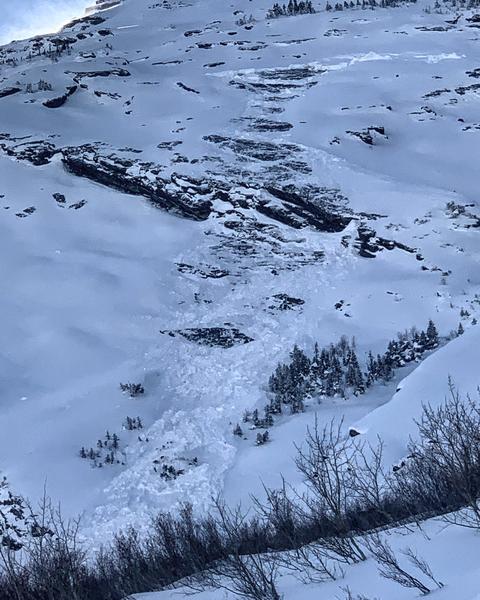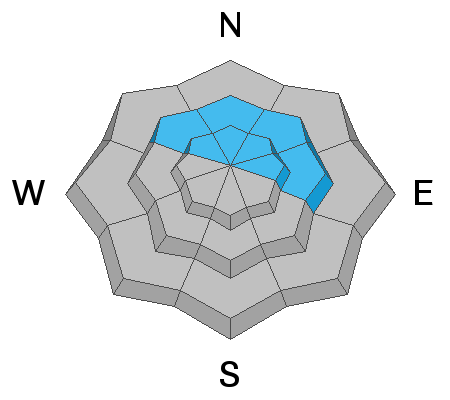This morning we have an inversion in the mountains, with temperatures near 30 F at elevations above 8000 feet, and mid-20s F at elevations near 7000 feet. Westerly winds averaged 10-15 mph and gusting up to 30 mph at ridgelines.
Today a weak weather system will move through the Wasatch bringing warm temperatures in the mid to upper 20s F. Westerly winds will continue throughout the day averaging 10-15 mph and gusting up to 30 mph at ridgetops. This system could bring 2-4" of snow late this morning.
Beginning Thursday, a steady westerly & northwesterly flow with embedded disturbances will bring more snow and periods of increased winds through the weekend. This weekend should have fairly cold temperatures. Total new snow amounts by Sunday could be 1-2 feet.
Yesterday, one ski area in the central Wasatch triggered several avalanches in the old, weak facets on high elevation, north-facing, steep rocky terrain that had not been opened or had received any explosive testing.
Most of this activity has come from the Cottonwood Canyons further north but is a good indication of what may be happening at higher elevations in the Provo Mountains.
On Sunday, a skier triggered 3 slab avalanches
on Square Top along the Park City Ridgeline. As he was escaping the first slide (several hundred feet wide), he triggered the second (20 ft wide) and then triggered the third (100 ft wide). Each of these broke in old, weak, faceted snow near the ground. These avalanches were about 20 inches deep and had avalanched during snowfall around Thanksgiving. On Saturday an
avalanche on Peak 10,420 in Big Cottonwood Canyon that was triggered
remotely
Monday, in
Toledo Chute in Little Cottonwood Canyon, a skier triggered a soft slab avalanche in the new snow about a foot deep. Ski patrols continued to trigger many shallow, soft slab avalanches in the new snow generally less than a foot deep.
Yesterday two glide avalanches were reported in Broads Fork of Big Cottonwood Canyon on
Bonkers and the
Diving Board. Both avalanches were on a NE aspect between 9500-9700'. These are outlier events that typically don't happen until spring or under spring-like weather conditions. We don't understand
glide avalanches very well and don't know why two occurred yesterday. What we do know is that these two slopes are ones that often produce glide avalanches in the spring. (photo M. White)












